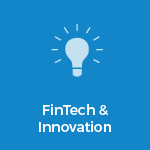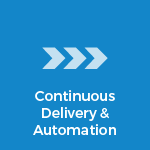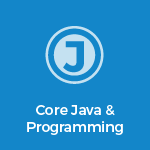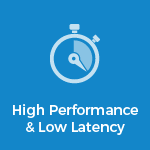
Payments are about to change. Source: Shutterstock
Background
Payments, as the name would suggest, is all about taking money (physically or electronically) from one place and paying it to another. We usually think of it as card payments, physical or on-line (eCommerce), but it can also refer to mobile wallets, direct bank-to-bank transfers for salaries and even crypto-currencies. However you think about it, payments represent one of the largest marketplaces on the planet.
Visa, for example, handles over $5 trillion in total global volume annually. At 2% per transaction, that’s $100 billion a year, but most of that 2% goes to the issuer (the bank name on your card). Visa takes just a few basis points (bp’s) [1] to provide the “plumbing” that connects all the banks together. In fact, there are several roles in a typical payment, the cardholder (you and me), the merchant (who you’re buying from), the acquirer (the company providing the POS [2] system), the network (Visa in this example) and the issuing bank (the bank that provide the cardholder with his/her card). For the merchant to get money from the cardholder, the acquirer, network and issuer act as intermediaries, taking little bits of that 2% off the transaction. It can get more complex as we add affiliates, foreign exchange (FX) and sales commission and more.
Even the smallest project costs millions in such an environment, not just for the PowerPoint jockeys, but the developers who must integrate into over a dozen databases and systems.
As you can imagine, with tens of billions of dollars flowing through networks like Visa every day, just 1bp is worth millions. Hence, there is a thriving marketplace in providing alternative payment options.
Legacy and regulation
No matter how you change the wiring, there is one major issue. Ultimately you need to take money from one place, a bank, and pay it into another bank. Banks are legacy institutions and their technology reflects that. While almost every investment bank on the planet uses Java on Linux, they have literally hundreds of systems, many of previous mergers or integration into systems that are geriatric. At one major bank where I worked, we found over 40,000 database instances. Even the smallest project costs millions in such an environment, not just for the PowerPoint jockeys, but the developers who must integrate into over a dozen databases and systems. Banks find it extremely difficult to adapt to new payment methods or provide simple and cheap APIs.
Additionally, at least since 2008, compliance and regulation has buried most banks to the degree that they cannot escape technical debt, and find themselves slowly imploding. The latest directive is PSD2 (Payment Service Directive), looming as a significant headache for the banks to implement.
A payment – step by step
We can split payments into two parts:
1) acquiring, i.e. taking consumer funds for merchants, and
2) disbursements, i.e. paying funds from merchants out to their supply chain, salesforce, etc.
While closely linked, they usually take place in two distinct parts. When buying something on Amazon, money is credited from a consumer account and settled to Amazon. Then, Amazon pays the vendor separately. There is a good reason for this, and it all about compliance and regulation.
If you were to pay the vendor directly your bank would need to know where the money’s going. Equally, if the vendor received large amounts of money from seemingly random accounts their bank would also need to know where it’s coming from. With Amazon acting in the middle we simplify some of the compliance and Anti-Money Laundering (AML). Amazon can also manage the FX by presenting the price in the buyer’s currency and choosing how to pay.
When a consumer pays Amazon, Amazon’s merchant acquirer, like Chase Paymentech, asks your issuing bank to credit the money from your account and settles it to Amazon. Amazon then instructs the vendor to ship the goods. Amazon actually takes ownership of the goods for a split second to meet regulatory rules. Amazon, at a later date, then tallies up the goods sold by the vendor, subtracts commissions etc. and instructs its bank to pay the vendor in his/her currency.
We all know that the emerging market in Asia is a gold mine, the problem is that many of them don’t have bank accounts.
When the vendor doesn’t receive the correct amount of funds, we need to involve the bank. Amazon’s bank supports Amazon’s needs because of billions of dollars deposited in accounts. When Amazon contacts its bank, the bank has to trace the payment across dozens of databases, logs and messaging systems. Worse still, it usually then goes on to another bank, a corresponding bank, and/or the vendor’s bank. Typically about 1% of payments fail, most errors are related to on-boarding or the vendor putting in the wrong details, not Amazon or the bank. This is made worse in the US where the banking system still relies on cheques. It costs the banks millions to service these payments, but they do it to keep the lucrative account.
I’ll drop the Amazon example from here, the same is true for AirBnB, Uber, Lyft, Apple, governments, employers, anyone making mass B2B or B2C payments.
Accounts aren’t exclusive banks
We all know that the emerging market in Asia is a gold mine, the problem is that many of them don’t have bank accounts. Shock, horror you might say, but in this day and age, you can survive very well without an account. We have hundreds of millions of AliPay in China, M-Pesa in Kenya and several other countries in the area, heard of PayPal? My own children have a card called “Osper”, they have current and savings accounts. My wife and I can control where they can spend their pocket money and they don’t have to carry cash when they shop on their own for expensive items like shoes, it’s all managed from an App in realtime. The problem is, none of these are bank accounts that a business can pay from their bank accounts, notwithstanding the fact that these modern types of accounts are only going to become a larger and larger part of the global economy.
Crypto-currencies are not the solution
Whether you’re an anarchist or banker, you will have surely seen the hype around crypto-currencies, with BitCoin at the forefront. I own some BitCoins, I’ve had some since the very earliest days and have made quite a bit of money from them. But that was purely luck. I would have made the same from buying gold or Apple shares at the right time. BitCoins are a minute part of the market, used predominately for porn, drugs and laundering. You can for coffee and cakes in some places, and you can even use BitCoin ATMs in modern cities, but it’s just a research experiment that a bunch of anarchists took seriously. Firstly, it takes a good ten minutes to validate a transaction, by which time your coffee will be cold. It’s very limited in what can be transacted due to the 1k limit and the only people who can change that are the few (I believe 2) developers who have commit writes to the code. Let’s just say it’s in the interest of many of the competitive crypto-currencies to make sure it doesn’t change. BitCoin is not controlled by a rich, over-paid banker, backed up by a central bank, a democratically elected government and an army, but rather a few programmers. Where would you put your money?
Blockchain – Today’s technology hammer
Blockchain is not the solution to everything, the idea is not new, ledger “checksums” have been published in newspapers for decades, trying to destroy every single copy of the New York Times a week after it’s been distributed across the globe is about as challenging as reverse engineering the hash on a blockchain. A ledger is a ledger, yes it could well be on a blockchain or it could be in a database, databases can still be encrypted and can also have checksums. As an architect, I like to solve problems with the right technology not use a technology to find problems. There are a few interesting features of a blockchain such as smart contracts but all of the traditional problems of CAP theorem etc. still apply to blockchains, enthusiasts seem to forget this. One thing is true, though, the only blockchain worth using is the permission centralised or decentralised model, as the distributed and un-permissioned model (as used by BitCoin), creates more problems than it solves.
So what is the solution?
Payments will not change overnight, you can’t simply re-route trillions across a new system and change the entire eco-system. We’re talking about so much money that it could totally change the global economy in a major way. Traditional banks struggle to survive, we’ve seen a lot disappear over the last few years and more will follow. I predict large changes when the US tax model changes and companies are able to repatriate their money back to the US, what will happen to the banks holding those trillions of US dollars today, how will they remain viable under current regulation? Brexit will have a major impact on many of the UK banks previously able to count European holdings in the same pool. We’re in for a rough ride in the next few years. Opportunity for some but for many it will be a tough dose of reality.
There are a few interesting features of a blockchain such as smart contracts but all of the traditional problems of CAP theorem etc. still apply to blockchains, enthusiasts seem to forget this.
We will see some of these new accounts and banks starting to provide better and better services. More and more people will start to use apps on their phone to receive a salary, make payments and purchases. Some of the more agile banks (almost an oxymoron) will realise this and strip off their retail arm, they may partner or fund one of these new accounts. We see the start of this already with banks closing down high street banks. They will then be far more competitive in providing services such as savings, investments, loans and mortgages.
What am I up to?
Having just sold my last company, C24, that provided much of the integration for over 30 of the world’s largest banks I’m working on what I believe will be the catalyst for much of the change I predict above. I’m obviously not alone, I’m working with some of the sharpest people on the planet, several of the large banks, one of the new banks I mention and some uber-personalities in this space. You will hear more, it’s not a secret, now is just not the right time to write about it. Of course, I will be speaking about this over the coming months.
[1] A basis point (bp) is 1% of 1% so 20bp is 0.2%. bp is often pronounced “bip”
[2] POS: Point of Sale











